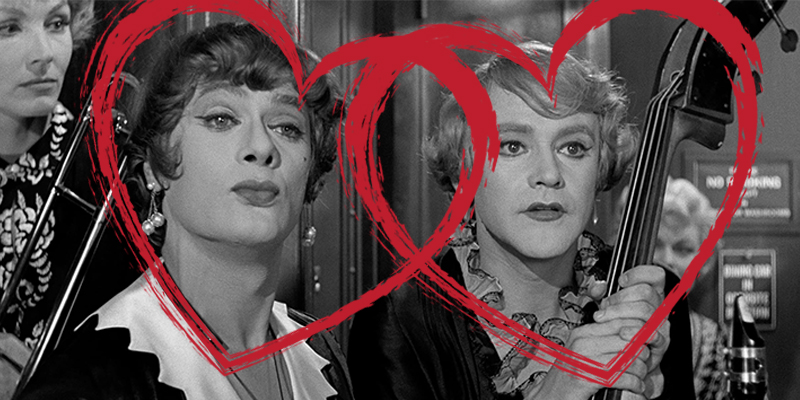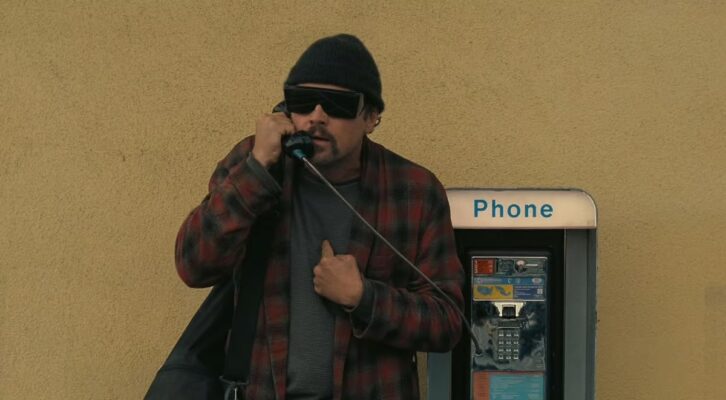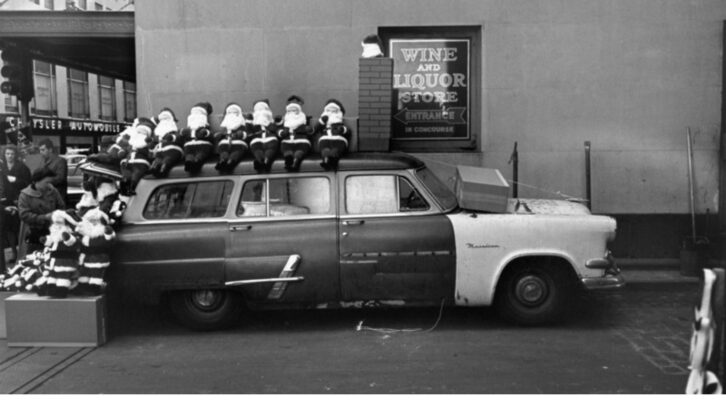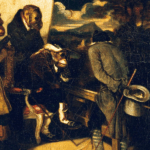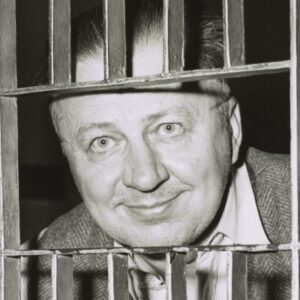When I say that you should watch Some Like It Hot (1959) this Valentine’s Day, I don’t just mean you should watch it because it’s a romantic comedy, or even because it’s one of the best romantic comedies of all time.
I mean, it’s about Valentine’s Day. Valentine’s Day, 1929, to be specific. To be even more specific, it is a retelling of the St. Valentine’s Day Massacre, the mob killing of seven associates of Chicago’s North Side gang in a parking garage on Valentine’s Day, 1929.
This makes Some Like It Hot a crime movie just as much as a romantic comedy. Which means… Welcome to CrimeReads, Joe, Daphne, and Sugar!
I hope no one reading this website doesn’t know the plot of this film, but just in case… it is the story of two musicians, Jerry (Jack Lemmon) and Joe (Tony Curtis) who witness a mob execution and go on the run, disguising themselves as women and joining a traveling all-female jazz band headed to a residency at a Florida hotel. In the band, they meet Sugar (Marilyn Monroe), the band’s lead singer, newly single and determined to change her approach to love. Both men (via their alter-egos Josephine, for Joe, and Daphne, for Jerry) are interested in Sugar, but Joe is determined to get her to fall for him via any means necessary… including re-cross-dressing as a man. He pretends to be a millionaire, the scion of an oil family, while Jerry-as-Daphne finds herself pursued by an actual millionaire, Osgood Fielding III (the incredible Joe. E. Brown)… which she actually kind of likes? But then the very gangsters looking for Joe and Jerry wind up arriving at the very Florida hotel where the band is playing, and our heroes need to pull off one last flamboyant escape.
Some Like It Hot isn’t about becoming multiple things, one after the other, but being multiple things all alongIf, in my mentioning both its Valentine’s Day setting and crimey genre-wear, I sound like I’m looking for a topical excuse to write about Some Like It Hot, it’s because I am. But I also think that Some Like It Hot’s Valentine’s Day-setting and crimey elements are essential to its success. Or, at least, they account for some of it.
The film writer Sam Wasson attributes this success to Some Like It Hot’s secret underlying theme: not one of any specific genre, but one of “reversal,” more broadly. He writes, “Some Like It Hot is so entrenched in its theme, the theme of reversal, that the movie itself keeps changing its costume, beginning—or so it seems—as a gangster picture before changing into a musical, then a comedy, then a romance.”
He continues,
“Reversals, small and large, run the length of the picture; they are its comic oxygen, taking the form of sight gags (a hearse—that runs booze), sound gags ([Tony] Curtis speaking in a high voice), character twists ([Jack] Lemmon’s character gets hornier when dressed as a woman), and innuendo. The sheer density of reversals—the number of ironies per cinematic square inch—not only keeps the laughs coming, and coming on thematic point, it pumps Some Like It Hot full of momentum, continually refreshing the drama, like a palate cleanser for our attention spans.”
But this makes sense. Indeed, with his use of the word “costumes,” Wasson has hit upon the film’s greatest point: Some Like It Hot isn’t merely about ordinary “reversals” but disguises, specifically. It’s a magic act of a movie, a parade of endless hats and wigs all being pulled off the same body, one after the other. That’s the thing about disguise: it’s not entirely a method of concealing identity, but a method of multiplying identity (a disguise is, after all, only recognizable as a disguise after it has been removed, and an additional identity has been made plain). Some Like It Hot isn’t about becoming multiple things, one after the other, but being multiple things all along, and allowing those different sides to take turns seeing the light.
It is worth briefly nothing that Some Like It Hot‘s shifting identities have allowed the film various progressive readings, especially along the lines of gender and sexuality. In 1978, Brandon French wrote “What Some Like It Hot affirms is neither heterosexual nor homosexual, nor even female, but rather the abolition of those absolute poles in favor of an androgynous continuum.” Wasson agrees with this reading, but suggests that Wilder wasn’t out to make any wise points about these subjects:
“He thought cross-dressing was funny. He thought Americans, dizzy in the rat race, were funny: ‘You’re a guy, and why would a guy want to marry a guy?’ ‘Security.’ That’s Wilder capitalism speaking, not love or lust or even man or woman. Some Like It Hot isn’t Tootsie; it’s not interested in how the experience of being a woman can make men better men. This is a Billy Wilder movie; it’s about the Machiavellian lengths to which people will go to get what they want, which is never much nobler than money, sex, or self-preservation.”
Thus, Some Like It Hot is so deft at juggling its identities that it is able to take on a progressive reading about identity, regardless of intent.
Anyway, according to these themes of reversals and disguises, Some Like It Hot’s setting on and around Valentine’s Day makes perfect sense. Valentine’s Day is a holiday of kaleidoscopic associations, often of a dual nature (romance/heartbreak, togetherness/loneliness). It’s also a date of a very famous 20th century mass murder; in that context, it’s a day of gangsters, of blaring tommy guns, and revenge.
In Catholic tradition, Valentine’s Day is the feast day of St. Valentine, the third-century Roman clergyman Valentinus who became known as a messenger of God after he restored sight to a blind daughter of the Roman judge Asterius. Valentinus’s unbridled preaching, however, led to several arrests and an eventual audience with Emperor Claudius II of Rome, who, after Valentinus attempted to convert him, ordered him to renounce his faith or suffer execution. Valentinus chose death, and was tortured by clubbing before his eventual beheading. Apparently, he sent a letter to Asterius’s daughter before his death, signed “your Valentine,” which inspired the modern tradition of love notes.
Besides the general themes of murder and friendship, this morsel of ancient history has nothing to do with Some Like It Hot, especially because Some Like It Hot is a movie about two guys who compromise everything they understand about themselves to save their skins… while the story of St. Valentine is the story of a man sticking to his own beliefs in the face of certain death.
Then again… Some Like It Hot is also a tale of risking everything and keeping extraordinary faith in what one is doing. It’s a screwball comedy, which means that characters act with their basest instincts, juggle as many things as possible, and don’t worry about things falling apart. They sort of know things won’t.
But it also means that these characters implicitly operate on a level of incredible trust that there is some sort of plan they are following, some sort of sense that things will work out the way they are supposed to. This way, Some Like It Hot, with all its narrative meanderings and cockamamie exchanges and shifting appearances, reveals itself to be a very committed, serious, sophisticated entity. As Wasson has said, “Some Like It Hot is built—by [Billy] Wilder and [I.A.L.] Diamond—on an unassailable foundation of structural and thematic integrity.” To perform all of its magic tricks so well, the film needs to be extremely tight and controlled, a perfect engine of spectacle. It needs to know what it’s doing and why it’s doing it, at every moment.
I kind of like that St. Valentine’s Day as a romantic holiday seems like a stretch from its proto-Medieval historical inspiration, because I like trying to de-elasticize that stretch, find the less-than-obvious connections between the two of them, often by plotting new points on the cultural spectrum between them. In order to reach their full potential, both romantic love and early Christian sainthood involve intense, whole-body, self-assured commitment… and, when you think about it, so does screwball comedy. So does everything about Some Like It Hot.

